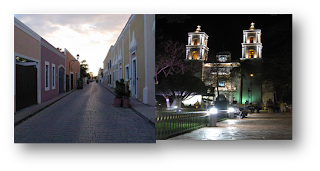VILLAGE FESTIVALS
From June 1st to 16th, festival in honor of Saint Antonio of Padua, patron saint of the town of Chemax.
The festivals begins at home the main organizer by a strange coincidence, is called "member."
Home of the organizer, the dancers accompanied by the orchestra, the dancer, are addressed within the bat population in search of Ceiba, who will dance to the rhythm of Angaripola and planted in the center of the makeshift arena, where they will be the dilated "bullfighting."
The Vaquerías, are the traditional festivals that are held from time immemorial in almost all populations of the Yucatan Peninsula. In this regard agreed indigenous culture and Hispanic. They are dedicated to the patron saint of the place and are a mixture of religious faith with secular entertainment. In the long process of musical changes, rises in the dairy farms and ranches in the mid-eighteenth century, with the sole purpose of holding and counting the branding of cattle. After marking the livestock, women cowboy entertained the guests and their spouses danced among ancient Mayan sounds mixed with Spanish music.
The festival begin is with the traditional "vaqueria" on June 1st at night, where is performed the crowning of the queen of the festival.
Each group reserves a day is the day that each trade makes their processions. You will see these groups march to the beat of the brass band, carrying colorful banners and flags sewed by hand. The women wear the traditional dress, and white shirt lords or traditional guayabera.
The gremios begin on June 5th and finish the June 13th. These are performed every year for a group of
people that is mandated a year before.
They make the food and the festival for Saint Antonio of Padua.
The gremios finish the June 13th with the delivery of the banners.
 BULLFIGHTS
BULLFIGHTSWhen the Spanish arrived in the Yucatán, they brought many of their traditions. One of these was the bullfight, which has remained popular to this day.
A public display of bullfighting was usually associated with a saint's feast day, when an entire town to be entertained.
The bullfights begins June 2nd, with the call “ bullfights of vaqueras” wich is gratuitous; and finish June 16th, in the bullfights everyday is sacrificated a bull.
 CHURCH OF SAN ANTONIO DE PADUA
CHURCH OF SAN ANTONIO DE PADUAThe church of San Antonio of Padua is from 16th and 17th centuries.
The church is clothe of traditions a day before of begging of festival of town, It’s decorated with banners of colors and flowers in the altar.
Come, to enjoy and to meet the mysteries that the festivals of Chemax have for you.





































